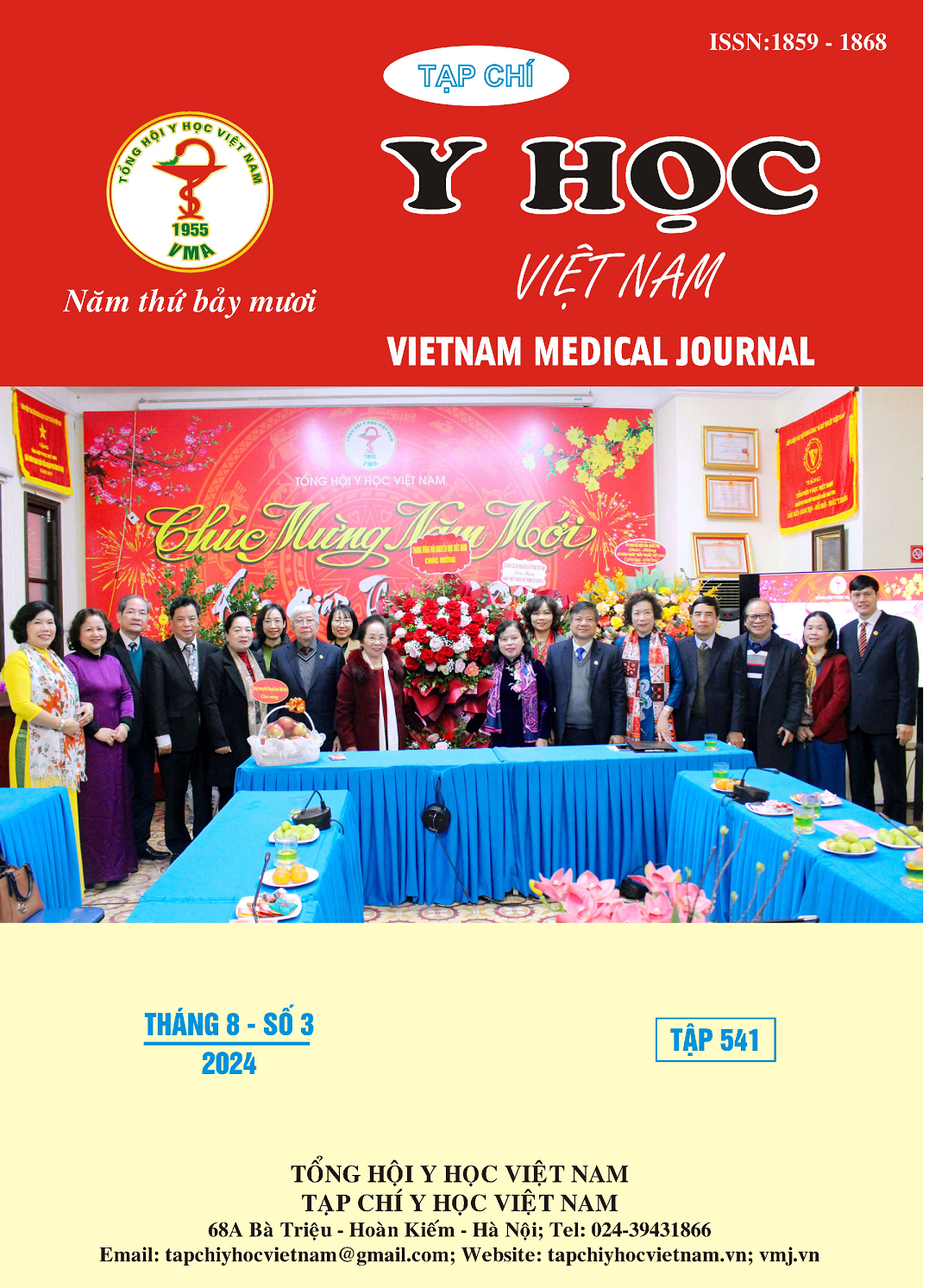CHARACTERISTICS AND BACTERIAL AGENTS VENTILATION-ASSOCIATED PNEUMONIA IN CHILDREN FROM 2 MONTHS TO 15 YEARS OLD AT INTENSIVE CARE UNIT, CAN THO CHILDREN'S HOSPITAL
Main Article Content
Abstract
Background: Mechanical ventilation plays an important role in the treatment of seriously ill patients in the Intensive Care Unit. Besides the effectiveness, children prescribed mechanical ventilation will have many risks, including the risk of ventilator-associated pneumonia. Research objective: Describe clinical and paraclinical characteristics and determine the proportion of some agents in children with ventilator-associated pneumonia. Research objects and methods: Cross-sectional descriptive study with analysis 52 patients. Results: 40.4% of children from 2 months to 11 months, etiology of meningoencephalitis (28.8%), white blood cells increased with age (55.8%), median white blood cell count was 13.3 k/mm3. Pro-calcitonin increased (78.3%) and median was 1.54 ng/ml. ETA culture was positive (65.4%), Acinetobacter baumannii and Pseudomonas aeruginosa accounted for the highest proportion (26.5%). The rate of Gram-positive bacteria in early ventilator-associated pneumonia was higher than that in late ventilator-associated pneumonia, but the difference was not statistically significant (p>0.05). Conclusion: Most children were from 2 to 11 months, there were more males than females and the rate of malnutrition was quite high. Indication for being intubated was neurological diseases. Fever appeared in most cases of ventilator-associated pneumonia. Pro-calcitonin had variable values in many studies. In cases of positive ETA cultures, Acinetobacter baumannii and Pseudomonas aeruginosa were the 2 bacterial agents at the highest rates.
Article Details
Keywords
: ventilator-associated pneumonia; bacteria; children.
References
2. I. A. Pneumatikos, C. K. Dragoumanis và D. E. Bouros (2009), "Ventilator-associated pneumonia or endotracheal tube-associated pneumonia? An approach to the pathogenesis and preventive strategies emphasizing the importance of endotracheal tube", Anesthesiology, 110(3), pp. 673-80.
3. M. Askarian, M. Yadollahi và O. Assadian (2012), "Point prevalence and risk factors of hospital acquired infections in a cluster of university-affiliated hospitals in Shiraz, Iran", J Infect Public Health, 5(2), pp. 169-76.
4. G. Vijay, A. Mandal, J. Sankar, et al (2018), "Ventilator Associated Pneumonia in Pediatric Intensive Care Unit: Incidence, Risk Factors and Etiological Agents", Indian J Pediatr, 85(10), pp. 861-866.
5. O. Neeser, A. Branche, B. Mueller, et al (2019), "How to: implement procalcitonin testing in my practice", Clin Microbiol Infect, 25(10), pp. 1226-1230.
6. Sadigov, Alizamin Mamedova và Irada Mammmadov (2019), "Ventilator-associated pneumonia and in-hospital mortality: which risk factors may predict in-hospital mortality in such patients?", 3(4).
7. Ncezid CDC và DHQP (2021), Pneumonia (Ventilator-Associated [VAP] and Non-Ventilator-Associated Pneumonia [PNEU]) Event, CDC Atlanta, GA, USA.
8. A. Tuteja, F. Pournami, A. Nandakumar, et al (2022), "Endotracheal Aspirate and Ventilator-Associated Pneumonia in Neonates: Revisiting an Age-Old Debate", Indian J Pediatr, 89(12), pp. 1202-1208.


